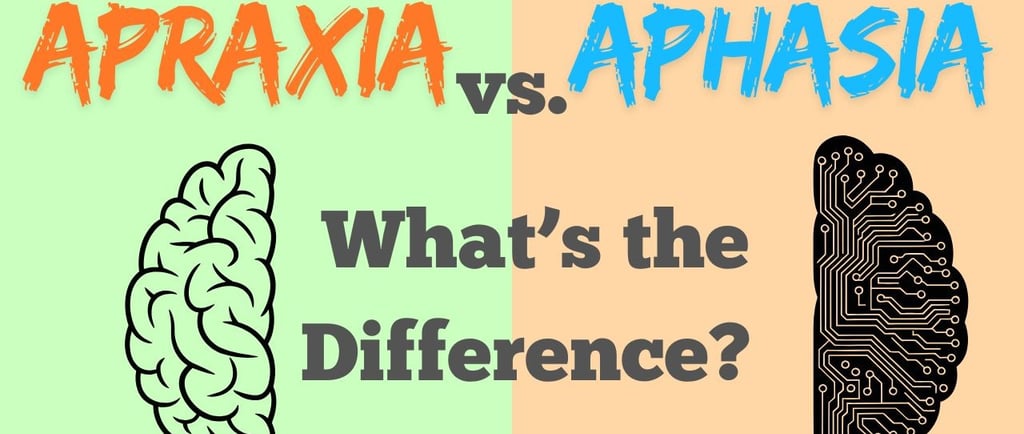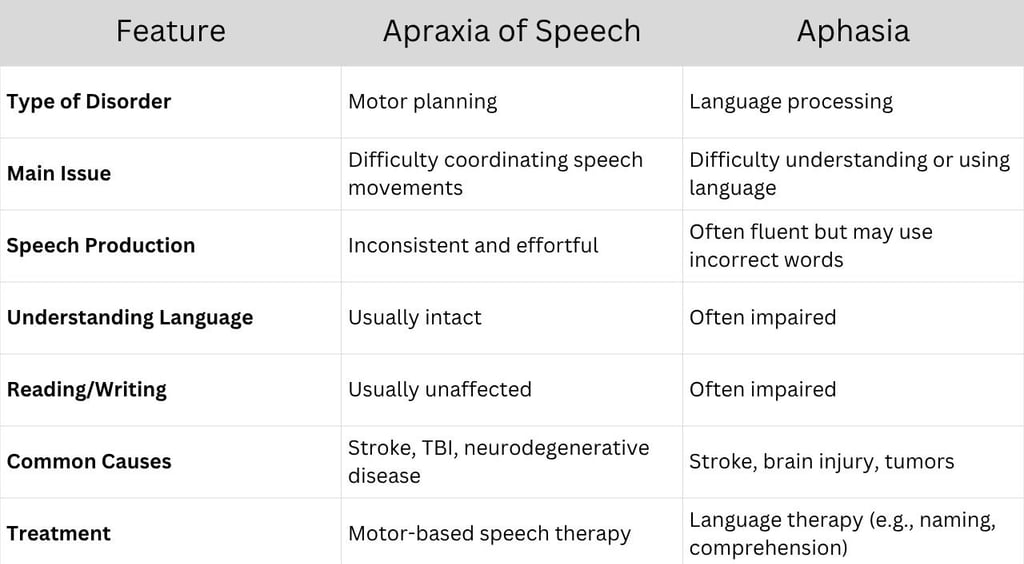Online Speech Therapy Platform
Apraxia vs. Aphasia: What’s the Difference?
Understanding Two Commonly Confused Speech and Language Disorders
APRAXIA
selvakumar
7/21/20252 min read


When it comes to speech and language disorders, apraxia and aphasia are two terms that are often confused. While they can occur together—especially after a stroke or brain injury—they are fundamentally different in how they affect communication.
In this blog, we’ll break down the differences between apraxia of speech and aphasia, helping patients, caregivers, and healthcare professionals better recognize and understand each condition.
🧠 What Is Apraxia of Speech?
Apraxia of Speech (AOS) is a motor speech disorder that occurs when the brain has trouble planning and coordinating the movements needed to speak. The muscles involved in speaking are not weak, but the brain struggles to send the right signals.
Key Features of Apraxia:
Inconsistent speech errors
Difficulty initiating speech
Groping for the right mouth position
Slow, effortful speech
Better automatic speech than voluntary speech
Causes: Often linked to stroke, traumatic brain injury (TBI), or neurological diseases such as Parkinson’s or dementia.
🧠 What Is Aphasia?
Aphasia is a language disorder caused by damage to the language-processing areas of the brain—usually the left hemisphere. It affects the ability to understand, produce, read, or write language.
Key Features of Aphasia:
Difficulty finding words (anomia)
Trouble understanding spoken or written language
Substituting or mixing up words
Impaired grammar or sentence structure
Writing and reading difficulties
Causes: Most commonly caused by stroke, but can also occur due to brain tumors, infections, or progressive neurological conditions.
🔍 Apraxia vs. Aphasia: A Quick Comparison Table


💡 Can Apraxia and Aphasia Occur Together?
Yes. Many patients, especially after a stroke, experience both conditions simultaneously. This is referred to as co-occurring apraxia and aphasia, which can make diagnosis and treatment more complex.
Speech-language pathologists (SLPs) use specific assessments to differentiate between the two, ensuring the right therapy approach is used.
💬 How Therapy Differs for Each
Apraxia Therapy: Focuses on motor speech planning, often using techniques like repetition, visual cues, and articulation drills.
Aphasia Therapy: Targets language comprehension and expression, using exercises like naming, conversation practice, and comprehension tasks.
🌐 Can Teletherapy Help?
Absolutely. Online speech therapy platforms like TelloMeet provide specialized programs for both apraxia and aphasia. With personalized, one-on-one sessions, patients can receive the right therapy from home—especially crucial for stroke survivors or those with mobility challenges.
✅ Takeaway Points
Apraxia is a motor speech disorder, while aphasia is a language disorder.
They have different causes, symptoms, and treatment methods.
Early diagnosis and tailored therapy are essential for recovery.
Teletherapy offers convenient and effective treatment solutions.
📞 Need Help with Speech or Language Recovery?
Let our certified speech-language pathologists at TelloMeet guide your journey.
👉 Book a free consultation and start your path to better communication today.
